Opinion & Analysis
Analyzing the logos of the six most recognizable golf brands
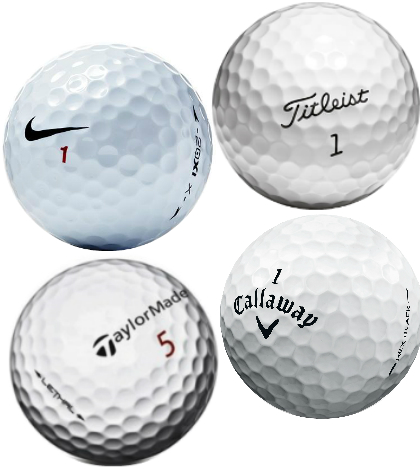
If a picture can be worth a thousand words, a logo can be worth a fair bit more. Like millions. Or billions.
The total golf economy of 2011 was responsible for nearly $70 billion in spending. As such, every OEM wants a share of this monetary pie and the way the consumer perceives an OEM has as much to do where the dollars are spent as anything.
With that in mind, let’s take a look at the stories behind and the images of a select few of the most recognized golf brands in the world.
Titleist
It would be a mistake to refer to the iconic logo as a font. Simply, it is a custom script and can’t be found as an option in any Word document. Thus, the mantra of “often imitated but never duplicated” might apply.
As a logo, the script is simple, clean and classic. There is a timeless element, which is no doubt a function of the fact that the logo hasn’t changed since its inception. The name Titleist is derived from moniker title holder or one who owns the title — the champion. Titleist has been a ball-first company since Phillip W. Skipper Young, an MIT grad, took X-rays of his ball and found the internal elements to be a bit off center. The result is the most dominant ball company in the world. It also makes a pretty decent line of woods, irons, hybrids and putters. You know what they say about something that ain’t broke.
My take: For many, Titleist IS golf. Like the logo, the resulting product is clean and classic. The target consumer for Titleist is one who isn’t necessarily looking for the loudest or boldest product, but a product that is going to perform and won’t ever run the risk of being labeled “gimmick” or flashy. The primary risk in this model is losing a consumer who is attracted to something a bit more caffeinated, but those who are always looking for the “next best thing” probably aren’t attracted to Titleist in the first place.
However, with such a large lead in the ball portion of the industry (nearly 50 percent marketshare), minor refinements and adjustments to the rest of the line are all the company needs at this point. The profits from this area allows the company to hold true to the manner in which it would like to develop and market the club portion of the company. The loyalty (and thus revenue stream) has been firmly established with the ball, and while other OEMs try to put a dent in Titleist’s market share, it’s like trying to drink the Atlantic through one of those twisty straws.
TaylorMade
The name conjures up images of a fine suit made to the exact specifications of the awaiting customer. However, this iteration is the largest golf OEM today, buoyed by a dominance in the metalwoods portion of the industry to the tune of nearly 35 percent. This company has profit like the desert has sand.
In 1983, TaylorMade introduced the first Burner series driver and the logo used was a red circle with a martini glass shaped “T” in the middle. Four years later, TaylorMade added irons to the product offerings and changed to a script logo. The current logo, a white “T” against a black background is cut in the shape of a driver. The simple contrast breeds an even simpler message. It’s all about the driver. Yes, yes it is.
In 2003, TaylorMade introduced the now-legendary R510 TP driver and accompanying TP crest to denote clubs more suited to the low-handicap player. TaylorMade went away from this visual designation after the R9 TP irons, although it has continued to offer a TP line of premium shafts. There are rumors, however, that the TP crest might make a revival moving forward and with it opportunities for the public consumer to play more of the equipment TaylorMade’s Staff Players actually use. Either way, the move will be calculated and likely quite profitable. If this does happen, expect TaylorMade to go full throttle and expect the public to show up with open wallets.
My take: TaylorMade knows exactly what it is doing and it is laughing all the way to the bank, because no one plays on the emotional vulnerability of the consumer golfer better than TaylorMade. The vast majority of humanity is never going break par, hit a smooth 7 iron 185 yards or putt like Tiger. But, it’s quite likely we will bomb a drive or two, hit the occasional sprinkler head and end up 300 yards down the fairway. Distance is intoxicating and TaylorMade is dedicated to reminding us of this time after time and dollar after dollar.
In an industry where the last decade has seen very few true “game-changing” innovations, TaylorMade continues to out-market and out-sell pretty much everyone else. What you think is true is far more important to TaylorMade than what is actually happening. It’s comfortable with its identity and its ability to market and shape the behavior of the willing consumer is unparalleled in the industry. When you’re on top, you’re going to take an inordinate amount of criticism. The upside is, well, everyone is still looking up at you.
Callaway
In 1988, Callaway Hickory Stick USA became Callaway Golf Company and the “Old English Callaway logo” introduced golfers to the Callaway golf brand and core S2H2 technology. The script is reminiscent of all things old, English, St. Andrews, sheep, pastures and the feathery. In 2002, the company added the chevron as an accent marker and has used this modified logo since. The chevron itself dates back to the Middle Ages, and as a French term generally refers to supporting beams (rafters) of a structure. The symbolic element is one of protection and part of the reason this image is often used on military uniforms.
My take: Appealing to the history of the game is an effective and cheap way to purchase authenticity. People like playing golf clubs made by real golf companies and what’s more real than a golf company with a logo that looks like it’s been around since Old Tom Morris was yelling at Young Tom Morris to get his chores done?
In the 1990s, Callaway struggled to create a mass presence as the logo, image and associated players (Johnny Miller, Jim Colbert) didn’t exactly enthuse the general consumer. Annika Sorenstam was undoubtedly a huge draw for females, but that in and of itself didn’t create mass revenue. The addition of Arnold Palmer to the Callaway staff in 2000 certainly increased credibility, but didn’t score many “youth” points. That said, during the last decade, Callaway has made a concerted effort to maintain top-shelf staff (Ernie Els, Phil Mickelson, Jim Furyk) while attracting new/younger talent (James Hahn, Morgan Pressel, Luke List, Patrick Reed). In the last 15 years, Callaway seems to have positioned itself quite nicely, and given its recent legal tiffs with TaylorMade, Callaway is poised to fight for every inch…or yard as the case may be.
Adams
From 1991 until the summer of 2013, Barney Adams and Adams Golf leveraged the momentum created by the original Tight Lies fairway woods into a full-fledged golf equipment company. The logo during this time was fairly non-descript and featured a red triangle followed by the name of the company. The logo itself was quite underwhelming and didn’t really promote anything in particular relative to the company.
However, in 2012, Adams was acquired by TaylorMade and then just a couple months ago the logo changed as well. This time to a script-type font, somewhat similar to that of Titleist.
My take: I’m not exactly sure what Adams is trying to achieve with the new logo, but as an image, I like it. There is certainly more personality to the logo and with it and more emotion than the mechanical triangle and text which it replaced. Given TaylorMade’s recent acquisition and the ensuing questions as to what would happen with Adams, I find the move curious.
Generally, a new logo is accompanied by an effort to rebrand or at least modify how the brand is perceived. So, the question is, “What is Adams going for?” If Adams is going to remain an entity unto itself, how will this logo help it achieve this identity? Some might see the new script as classy and simple; a nice ying to TaylorMade’s edgy yang. Others might see it as a cheap version of the Titleist script and still others might think it looks more like a baseball team than golf company.
Right now there are just too many variables to know exactly where Adams is headed, but wherever they are going, the new logo is clearly part of the plan.
Nike Golf
Nike might not have the storied golf history of a Ping, Titleist or Wilson. But it does have one of the most recognized and studied logos in the history of western civilization. The company was started by Bill Bowerman and Phil Knight in the 1960s, but Nike didn’t enter the golf arena until 1998. Interestingly enough, Nike had already committed $40 million to Tiger Woods in 1995, although it had no balls or clubs of its own. That soon would change.
The story of the swoosh, Nike’s iconic logo, is a bit more interesting. In 1975, Carolyn Davidson (then a student at Portland State) was paid $2 per hour to design a logo for Nike. Seventeen and a half hours and $35 later, the swoosh was born. Originally, Phil Knight wasn’t totally sold on the logo, but thought it might grow on him. Good call!
Eventually, Carolyn was given 500 shares of Nike stock for her efforts. So I guess you can look at it one of two ways: $30,000 is a lot of cash for less than 20 hours of work, or Phil Knight got the best deal since the U.S. Government purchased the Louisiana Territory.
My take: Nike’s success prior to entering the golf market is both a bastion and hinderance. The vast amounts of capital Nike accrues allowed it to sign the most marketable figures in golf: Tiger in 1995 and Rory just last year. It also allows Nike to sign golfers to a complete deal: bag, clubs, balls, hat, glove, clubs, etc. If a player is Nike, he or she is all Nike. This is great for the players and club pros who rep the company.
The challenge is winning over the general consumer and the hurdle for some is to see Nike as a legitimate golf company. Given the level and quality of product available from other OEMs, why would someone choose to play Nike over company __________? That’s the question.
Ping
Onomatopoeia. Kind of what you’d expect from an OEM rooted in engineering. It is what it says it is. Furthermore, what’s more simple than the sound of John Solheim’s quest to create a better putter? Ping. That’s it. The moment of impact. Pure and simple. A bit metallic and it resonates.
Ping’s personification as “PING Man” seems to be equal parts man, Gumby and penguin. Whatever it is, John Solheim created it by bending wires and ultimately liked what he came up with. The unique design is reminiscent of a time when logos were not computer generated and the result of thousands of dollars of market analysis and advertising firms. Nothing is contrived and every design feature is purposeful. Both the PING script and PING Man are unmistakable and like their products, I don’t see Ping changing either unless there is a bona fide reason to do so.
My take: Ping is as authentic an OEM as we have in the major marketplace today. Profit is still the final analysis for any enterprise, but there are a variety of ways to get there. Ping gets there by staying true to its time-tested model. Engineer the living daylights out of a product and make sure it works. When it does, people will buy it. What you see is what you get. Form follows function for Ping, and the results are hard to deny.
From the Anser putter and perimeter-weighted irons to custom-fit everything, Ping has authored several of the most lasting and copied designs of the last several decades. That said, the cost for function-first designs is often lackluster aesthetics and critics of Ping are quick to note that until recently, many irons (see Eye 2) weren’t going to win any beauty contests. For my money, the the S55, Ping Gorge wedges and Anser Forged irons are a far cry from the Ping shovels of the 1990s.
It seems like everyone has a kid on the honor roll and the bumper sticker to prove it. Our culture, for better or worse, exhibits a heavy reliance on exposure and given the varied social media, 24/7 news coverage and 756 TV channels, we know the flavors of OEMs like Baskin Robbins.
Marquee players become synonymous with an OEM. Tiger = Nike, Hunter and Bubba: = Ping. Phil: = Callaway and the list goes on. At the end of the day, consumers purchases more than the product itself. They purchase a piece of the identity of the OEM. Why else do Titleist hats sell so well?
- LIKE5
- LEGIT10
- WOW2
- LOL1
- IDHT1
- FLOP3
- OB1
- SHANK3
19th Hole
Vincenzi’s 2024 Wells Fargo Championship betting preview: Tommy Fleetwood ready to finally land maiden PGA Tour title

The PGA Tour season ramps back up this week for another “signature event,” as golf fans look forward to the year’s second major championship next week.
After two weaker-field events in the Zurich Classic and the CJ Cup Byron Nelson, most of the best players in the world will head to historic Quail Hollow for one of the best non-major tournaments of the year.
Last season, Wyndham Clark won the event by four shots.
Quail Hollow is a par-71 measuring 7,521 yards that features Bermudagrass greens. The tree-lined, parkland style course can play quite difficult and features one of the most difficult three-hole stretches in golf known as “The Green Mile,” which makes up holes 16-18: two mammoth par 4s and a 221-yard par 3. All three holes have an average score over par, and water is in play in each of the last five holes on the course.
The field is excellent this week with 68 golfers teeing it up without a cut. All of the golfers who’ve qualified are set to tee it up, with the exception of Scottie Scheffler, who is expecting the birth of his first child.
Past Winners at Quail Hollow
- 2023: Wyndham Clark (-19)
- 2022: Max Homa (-8)
- 2021: Rory McIlroy (-10)
- 2019: Max Homa (-15)
- 2018: Jason Day (-12)
- 2017: Justin Thomas (-8) (PGA Championship)
- 2016: James Hahn (-9)
- 2015: Rory McIlroy (-21)
Key Stats For Quail Hollow
Strokes Gained: Approach
Strokes gained: Approach will be extremely important this week as second shots at Quail Hollow can be very difficult.
Total SG: Approach Over Past 24 Rounds
- Akshay Bhatia (+1.16)
- Tom Hoge (+1.12)
- Corey Conners (+1.01)
- Shane Lowry (+0.93)
- Austin Eckroat (+0.82)
Strokes Gained: Off the Tee
Quail Hollow is a long course on which it is important to play from the fairway. Both distance and accuracy are important, as shorter tee shots will result in approach shots from 200 or more yards. With most of the holes heavily tree lined, errant drives will create some real trouble for the players.
Strokes Gained: Off the Tee Past 24 Rounds:
- Ludvig Aberg (+0.73)
- Rory McIlroy (+0.69)
- Xander Schauffele (+0.62)
- Viktor Hovland (+0.58)
- Chris Kirk (+0.52)
Proximity: 175-200
The 175-200 range is key at Quail Hollow. Players who can hit their long irons well will rise to the top of the leaderboard.
Proximity: 175-200+ over past 24 rounds:
- Cameron Young (28’2″)
- Akshay Bhatia (29’6″)
- Ludvig Aberg (+30’6″)
- Sam Burns (+30’6″)
- Collin Morikawa (+30’9″)
SG: Total on Tom Fazio Designs
Players who thrive on Tom Fazio designs get a bump for me at Quail Hollow this week.
SG: Total on Tom Fazio Designs over past 36 rounds:
- Patrick Cantlay (+2.10)
- Rory McIlroy (+1.95)
- Tommy Fleetwood (+1.68)
- Austin Eckroat (+1.60)
- Will Zalatoris (+1.57)
Strokes Gained: Putting (Bermudagrass)
Strokes Gained: Putting has historically graded out as the most important statistic at Quail Hollow. While it isn’t always predictable, I do want to have it in the model to bump up golfers who prefer to putt on Bermudagrass.
Strokes Gained: Putting (Bermudagrass) Over Past 24 Rounds:
- Taylor Moore (+0.82)
- Nick Dunlap (+.76)
- Wyndham Clark (+.69)
- Emiliano Grillo (+.64)
- Cam Davis (+.61)
Course History
This stat will incorporate players that have played well in the past at Quail Hollow.
Course History over past 36 rounds (per round):
- Rory McIlroy (+2.50)
- Justin Thomas (+1.96)
- Jason Day (+1.92)
- Rickie Fowler (+1.83)
- Viktor Hovland (+1.78)
Wells Fargo Championship Model Rankings
Below, I’ve compiled overall model rankings using a combination of the five key statistical categories previously discussed — SG: Approach (27%), SG: Off the Tee (23%), SG: Total on Fazio designs (12%), Proximity: 175-200 (12%), SG: Putting Bermuda grass (12%), and Course History (14%).
- Wyndham Clark
- Rory McIlroy
- Xander Schauffele
- Shane Lowry
- Hideki Matsuyama
- Viktor Hovland
- Cameron Young
- Austin Eckroat
- Byeong Hun An
- Justin Thomas
2024 Wells Fargo Championship Picks
Tommy Fleetwood +2500 (DraftKings)
I know many out there have Tommy fatigue when it comes to betting, which is completely understandable given his lack of ability to win on the PGA Tour thus far in his career. However, history has shown us that players with Fleetwood’s talent eventually break though, and I believe for Tommy, it’s just a matter of time.
Fleetwood has been excellent on Tom Fazio designs. Over his past 36 rounds, he ranks 3rd in the field in Strokes Gained: Total on Fazio tracks. He’s also been incredibly reliable off the tee this season. He’s gained strokes in the category in eight of his past nine starts, including at The Masters, the PLAYERS and the three “signature events” of the season. Tommy is a golfer built for tougher courses and can grind it out in difficult conditions.
Last year, Fleetwood was the first-round leader at this event, firing a Thursday 65. He finished the event in a tie for 5th place.
For those worried about Fleetwood’s disappointing start his last time out at Harbour Town, he’s bounced back nicely after plenty of poor outings this season. His T7 at the Valero Texas Open was after a MC and T35 in his prior two starts and his win at the Dubai Invitational came after a T47 at the Sentry.
I expect Tommy to bounce back this week and contend at Quail Hollow.
Justin Thomas +3000 (DraftKings)
It’s been a rough couple of years for Justin Thomas, but I don’t believe things are quite as bad as they seem for JT. He got caught in the bad side of the draw at Augusta for last month’s Masters and has gained strokes on approach in seven of his nine starts in 2024.
Thomas may have found something in his most recent start at the RBC Heritage. He finished T5 at a course that he isn’t the best fit for on paper. He also finally got the putter working and ranked 15th in Strokes Gained: Putting for the week.
The two-time PGA champion captured the first of his two major championships at Quail Hollow back in 2017, and some good vibes from the course may be enough to get JT out of his slump.
Thomas hasn’t won an event in just about two years. However, I still believe that will change soon as he’s been one of the most prolific winners throughout his PGA Tour career. Since 2015, he has 15 PGA Tour wins.
Course history is pretty sticky at Quail Hollow, with players who like the course playing well there on a regular basis. In addition to JT’s PGA Championship win in 2017, he went 4-1 at the 2022 Presidents Cup and finished T14 at the event last year despite being in poor form. Thomas can return as one of the top players on the PGA Tour with a win at a “signature event” this week.
Cameron Young +3500 (DraftKings)
For many golf bettors, it’s been frustrating backing Cam Young this season. His talent is undeniable, and one of the best and most consistent performers on the PGA Tour. He just hasn’t broken through with a victory yet. Quail Hollow has been a great place for elite players to get their first victory. Rory McIlroy, Anthony Kim, Rickie Fowler and Wyndham Clark all notched their first PGA Tour win at Quail.
Throughout Cam Young’s career, he has thrived at tougher courses with strong fields. This season, he finished T16 at Riviera and T9 at Augusta National, demonstrating his preference of a tough test. His ability to hit the ball long and straight off the tee make him an ideal fit for Quail Hollow, despite playing pretty poorly his first time out in 2023 (T59). Young should be comfortable playing in the region as he played his college golf at Wake Forest, which is about an hour’s drive from Quail Hollow.
The 26-year-old has played well at Tom Fazio designs in the past and ranks 8th in the field in Strokes Gained: Total on those courses in his last 36 rounds. Perhaps most importantly, this season, Young is the best player on the PGA Tour in terms of proximity from 175-200 in the fairway, which is where a plurality and many crucial shots will come from this week.
Young is an elite talent and Quail Hollow has been kind to players of his ilk who’ve yet to win on Tour.
Byeong Hun An +5000 (FanDuel)
Byeong Hun An missed some opportunities last weekend at the CJ Cup Byron Nelson. He finished T4 and played some outstanding golf, but a couple of missed short putts prevented him from getting to the winning score of -23. Despite not getting the win, it’s hard to view An’s performance as anything other than an overwhelming success. It was An’s fourth top-ten finish of the season.
Last week, An gained 6.5 strokes ball striking, which was 7th in the field. He also ranked 12th for Strokes Gained: Approach and 13th for Strokes Gained: Off the Tee. The South Korean has been hitting the ball so well from tee to green all season long and he now heads to a golf course that should reward his precision.
An’s driver and long irons are absolute weapons. At Quail Hollow, players will see plenty of approach shots from the 175-200 range as well as some from 200+. In his past 24 rounds, Ben ranks 3rd in the field in proximity from 175-200 and 12th in proximity from 200+. Playing in an event that will not end up being a “birdie” fest should help An, who can separate from the field with his strong tee to green play. The putter may not always cooperate but getting to -15 is much easier than getting to -23 for elite ball strikers who tend to struggle on the greens.
Winning a “signature event” feels like a tall task for An this week with so many elite players in the field. However, he’s finished T16 at the Genesis Invitational, T16 at The Masters and T8 at the Arnold Palmer Invitational. The 32-year-old’s game has improved drastically this season and I believe he’s ready to get the biggest win of his career.
- LIKE4
- LEGIT1
- WOW0
- LOL0
- IDHT0
- FLOP0
- OB0
- SHANK0
19th Hole
Vincenzi’s LIV Golf Singapore betting preview: Course specialist ready to thrive once again

After another strong showing in Australia, LIV Golf will head to Sentosa Golf Club in Singapore looking to build off of what was undoubtedly their best event to date.
Sentosa Golf Club sits on the southern tip of Singapore and is one of the most beautiful courses in the world. The course is more than just incredible scenically; it was also rated 55th in Golf Digest’s top-100 courses in 2022-2023 and has been consistently regarded as one of the best courses in Asia. Prior to being part of the LIV rotation, the course hosted the Singapore Open every year since 2005.
Sentosa Golf Club is a par 71 measuring 7,406 yards. The course will require precise ball striking and some length off the tee. It’s possible to go low due to the pristine conditions, but there are also plenty of hazards and difficult spots on the course that can bring double bogey into play in a hurry. The Bermudagrass greens are perfectly manicured, and the course has spent millions on the sub-air system to keep the greens rolling fast. I spoke to Asian Tour player, Travis Smyth, who described the greens as “the best [he’s] ever played.”
Davis Love III, who competed in a Singapore Open in 2019, also gushed over the condition of the golf course.
“I love the greens. They are fabulous,” the 21-time PGA Tour winner said.
Love III also spoke about other aspects of the golf course.
“The greens are great; the fairways are perfect. It is a wonderful course, and it’s tricky off the tee.”
“It’s a long golf course, and you get some long iron shots. It takes somebody hitting it great to hit every green even though they are big.”
As Love III said, the course can be difficult off the tee due to the length of the course and the trouble looming around every corner. It will take a terrific ball striking week to win at Sentosa Golf Club.
In his pre-tournament press conference last season, Phil Mickelson echoed many of the same sentiments.
“To play Sentosa effectively, you’re going to have a lot of shots from 160 to 210, a lot of full 6-, 7-, 8-iron shots, and you need to hit those really well and you need to drive the ball well.”
Golfers who excel from tee to green and can dial in their longer irons will have a massive advantage this week.
Stat Leaders at LIV Golf Adelaide:
Fairways Hit
1.) Louis Oosthuizen
2.) Anirban Lahiri
3.) Jon Rahm
4.) Brendan Steele
5.) Cameron Tringale
Greens in Regulation
1.) Brooks Koepka
2.) Brendan Steele
3.) Dean Burmester
4.) Cameron Tringale
5.) Anirban Lahiri
Birdies Made
1.) Brendan Steele
2.) Dean Burmester
3.) Thomas Pieters
4.) Patrick Reed
5.) Carlos Ortiz
LIV Golf Individual Standings:
1.) Joaquin Niemann
2.) Jon Rahm
3.) Dean Burmester
4.) Louis Oosthuizen
5.) Abraham Ancer
LIV Golf Team Standings:
1.) Crushers
2.) Legion XIII
3.) Torque
4.) Stinger GC
5.) Ripper GC
LIV Golf Singapore Picks
Sergio Garcia +3000 (DraftKings)
Sergio Garcia is no stranger to Sentosa Golf Club. The Spaniard won the Singapore Open in 2018 by five strokes and lost in a playoff at LIV Singapore last year to scorching hot Talor Gooch. Looking at the course setup, it’s no surprise that a player like Sergio has played incredible golf here. He’s long off the tee and is one of the better long iron players in the world when he’s in form. Garcia is also statistically a much better putter on Bermudagrass than he is on other putting surfaces. He’s putt extremely well on Sentosa’s incredibly pure green complexes.
This season, Garcia has two runner-up finishes, both of them being playoff losses. Both El Camaleon and Doral are courses he’s had success at in his career. The Spaniard is a player who plays well at his tracks, and Sentosa is one of them. I believe Sergio will get himself in the mix this week. Hopefully the third time is a charm in Singapore.
Paul Casey +3300 (FanDuel)
Paul Casey is in the midst of one of his best seasons in the five years or so. The results recently have been up and down, but he’s shown that when he’s on a golf course that suits his game, he’s amongst the contenders.
This season, Casey has finishes of T5 (LIV Las Vegas), T2 (LIV Hong Kong), and a 6th at the Singapore Classic on the DP World Tour. At his best, the Englishman is one of the best long iron players in the world, which makes him a strong fit for Sentosa. Despite being in poor form last season, he was able to fire a Sunday 63, which shows he can low here at the course.
It’s been three years since Casey has won a tournament (Omega Dubai Desert Classic in 2021), but he’s been one of the top players on LIV this season and I think he can get it done at some point this season.
Mito Pereira +5000 (Bet365)
Since Mito Pereira’s unfortunate demise at the 2022 PGA Championship, he’s been extremely inconsistent. However, over the past few months, the Chilean has played well on the International Series as well as his most recent LIV start. Mito finished 8th at LIV Adelaide, which was his best LIV finish this season.
Last year, Pereira finished 5th at LIV Singapore, shooting fantastic rounds of 67-66-66. It makes sense why Mito would like Sentosa, as preeminent ball strikers tend to rise to the challenge of the golf course. He’s a great long iron player who is long and straight off the tee.
Mito has some experience playing in Asia and is one of the most talented players on LIV who’s yet to get in the winner’s circle. I have questions about whether or not he can come through once in contention, but if he gets there, I’m happy to roll the dice.
Andy Ogletree +15000 (DraftKings)
Andy Ogletree is a player I expected to have a strong 2024 but struggled early in his first full season on LIV. After failing to crack the top-25 in any LIV event this year, the former U.S. Amateur champion finally figured things out, finished in a tie for 3rd at LIV Adelaide.
Ogletree should be incredible comfortable playing in Singapore. He won the International Series Qatar last year and finished T3 at the International Series Singapore. The 26-year-old was arguably the best player on the Asian Tour in 2023 and has been fantastic in the continent over the past 18 months.
If Ogletree has indeed found form, he looks to be an amazing value at triple-digit odds.
- LIKE3
- LEGIT3
- WOW1
- LOL2
- IDHT0
- FLOP2
- OB0
- SHANK0
Opinion & Analysis
Ryan: Lessons from the worst golf instructor in America

In Tampa, there is a golf course that boasts carts that do not work, a water range, and a group of players none of which have any chance to break 80. The course is overseen by a staff of crusty men who have succeeded at nothing in life but ending up at the worst-run course in America. However, this place is no failure. With several other local courses going out of business — and boasting outstanding greens — the place is booked full.
While I came for the great greens, I stayed to watch our resident instructor; a poor-tempered, method teacher who caters to the hopeless. At first, it was simply hilarious. However, after months of listening and watching, something clicked. I realized I had a front-row seat to the worst golf instructor in America.
Here are some of my key takeaways.
Method Teacher
It is widely accepted that there are three types of golf instructors: system teachers, non-system teachers, and method teachers. Method teachers prescribe the same antidote for each student based on a preamble which teachers can learn in a couple day certification.
Method teaching allows anyone to be certified. This process caters to the lowest caliber instructor, creating the illusion of competency. This empowers these underqualified instructors with the moniker of “certified” to prey on the innocent and uninformed.
The Cult of Stack and Jilt
The Stack and Tilt website proudly boasts, “A golfer swings his hands inward in the backswing as opposed to straight back to 1) create power, similar to a field goal kicker moving his leg in an arc and 2) to promote a swing that is in-to-out, which produces a draw (and eliminates a slice).”
Now, let me tell you something, there is this law of the universe which says “energy can either be created or destroyed,” so either these guys are defying physics or they have no idea what they are taking about. Further, the idea that the first move of the backswing determines impact is conjecture with a splash of utter fantasy.
These are the pontifications of a method — a set of prescriptions applied to everyone with the hope of some success through the placebo effect. It is one thing for a naive student to believe, for a golf instructor to drink and then dispel this Kool-Aid is malpractice.
Fooled by Randomness
In flipping a coin, or even a March Madness bet, there is a 50-50 chance of success. In golf, especially for new players, results are asymmetric. Simply put: Anything can happen. The problem is that when bad instructors work with high handicappers, each and every shot gets its own diagnosis and prescription. Soon the student is overwhelmed.
Now here’s the sinister thing: The overwhelming information is by design. In this case, the coach is not trying to make you better, they are trying to make you reliant on them for information. A quasi Stockholm syndrome of codependency.
Practice
One of the most important scientists of the 20th century was Ivan Pavlov. As you might recall, he found that animals, including humans, could be conditioned into biological responses. In golf, the idea of practice has made millions of hackers salivate that they are one lesson or practice session from “the secret.”
Sunk Cost
The idea for the worst golf instructor is to create control and dependency so that clients ignore the sunk cost of not getting better. Instead, they are held hostage by the idea that they are one lesson or tip away from unlocking their potential.
Cliches
Cliches have the effect of terminating thoughts. However, they are the weapon of choice for this instructor. Add some hyperbole and students actually get no information. As a result, these players couldn’t play golf. When they did, they had no real scheme. With no idea what they are doing, they would descend into a spiral of no idea what to do, bad results, lower confidence, and running back to the lesson tee from more cliches.
The fact is that poor instruction is about conditioning players to become reliant members of your cult. To take away autonomy. To use practice as a form of control. To sell more golf lessons not by making people better but through the guise that without the teacher, the student can never reach their full potential. All under the umbrella of being “certified” (in a 2-day course!) and a melee of cliches.
This of course is not just happening at my muni but is a systemic problem around the country and around the world, the consequences of which are giving people a great reason to stop playing golf. But hey, at least it’s selling a lot of golf balls…
- LIKE18
- LEGIT2
- WOW0
- LOL4
- IDHT1
- FLOP4
- OB1
- SHANK24
-

 19th Hole2 weeks ago
19th Hole2 weeks agoJustin Thomas on the equipment choice of Scottie Scheffler that he thinks is ‘weird’
-

 19th Hole2 weeks ago
19th Hole2 weeks ago‘Absolutely crazy’ – Major champ lays into Patrick Cantlay over his decision on final hole of RBC Heritage
-

 19th Hole3 weeks ago
19th Hole3 weeks agoReport: LIV Golf identifies latest star name they hope to sign to breakaway tour
-

 19th Hole3 weeks ago
19th Hole3 weeks agoBrandel Chamblee has ‘no doubt’ who started the McIlroy/LIV rumor and why
-

 19th Hole2 weeks ago
19th Hole2 weeks agoLET pro gives detailed financial breakdown of first week on tour…and the net result may shock you
-

 Equipment3 weeks ago
Equipment3 weeks agoJason Day on his recent switch into Srixon ZX5 and ZX7 Mk II irons
-

 19th Hole5 days ago
19th Hole5 days agoGary Player claims this is what ‘completely ruined’ Tiger Woods’ career
-

 Whats in the Bag1 week ago
Whats in the Bag1 week agoTeam McIlowry (Rory McIlroy, Shane Lowry) winning WITBs: 2024 Zurich Classic

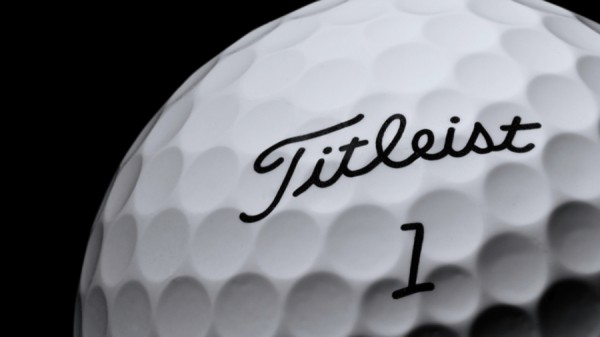
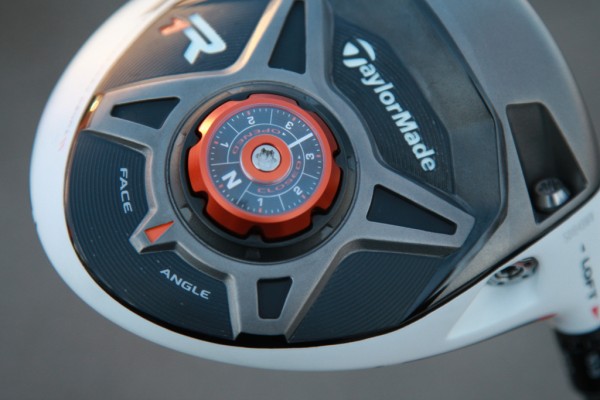
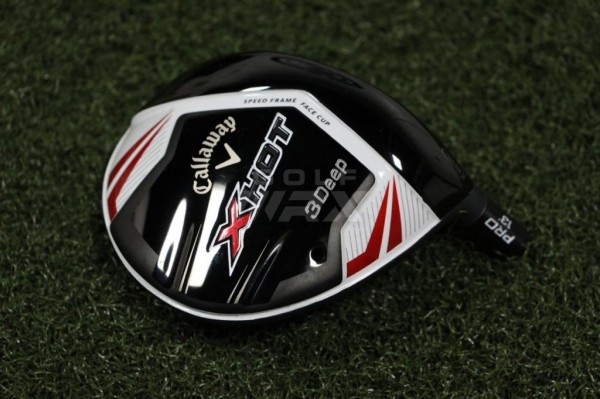
![ADAMS new and old[4]](https://www.golfwrx.com/wp-content/uploads/2013/09/ADAMS-new-and-old41.jpg)
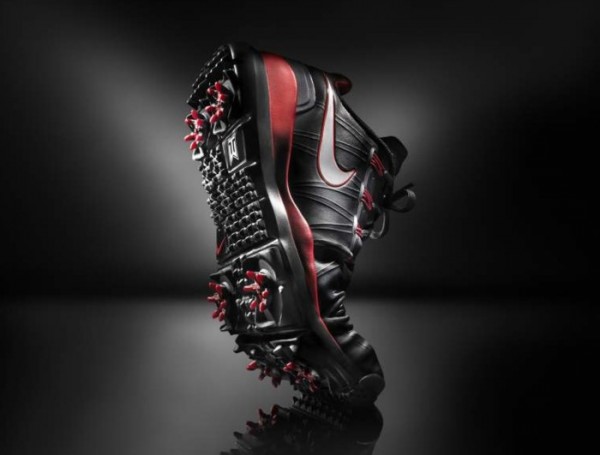
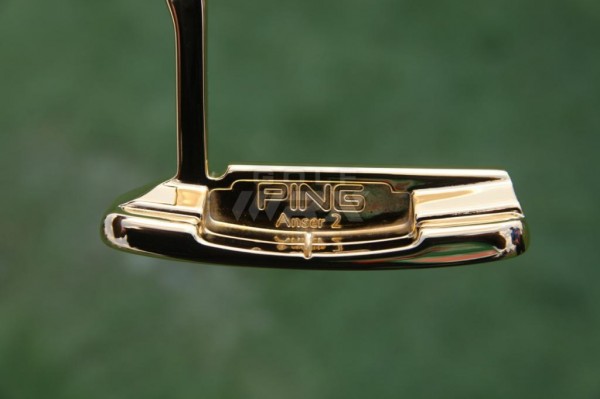




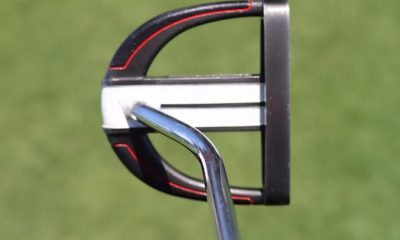



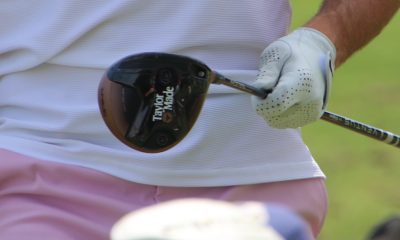



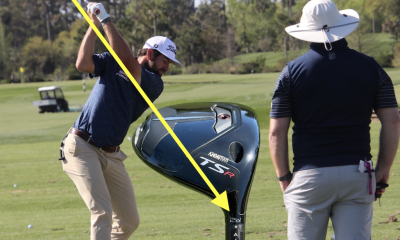













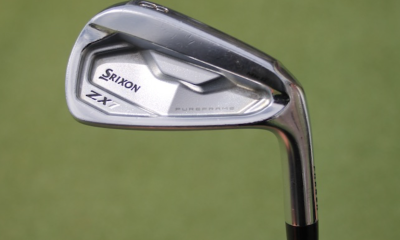



Edward
Oct 17, 2013 at 12:49 pm
Nice change of pace here. Good read.
Stewart
Oct 16, 2013 at 4:51 pm
Nice article.
Don’t see where Nike come into it as far as golf though. Even with Tiger and a few others I just don’t really think of them as a golf company.
Maybe could have included the Scotty Cameron logo.
Rich
Oct 16, 2013 at 4:05 pm
Well,” LOGO”—Titlest is a name not a logo, Taylormade is going back to the shield away from their funky “T”, Adams is also a name, Nike has a Logo the swoosh, Ping rarely uses the little man with a club, Callaway has a Logo the Chevron. But you left out Wilson Staff the oldest of all The W/S shield and the best looking of all time.
Ask who has the best Logo Not A name!
Metrybill
Oct 30, 2013 at 9:52 pm
For ME, a 65 y.o., the bet looking, soft feeling and performing balls ever (great performers in the day), were the 60’s and 70’s Maxfli black and red balls. The current iterations are harsh. Still like the look.
195 Bowler
Oct 15, 2013 at 8:10 pm
Manufacturers take their logos seriously. I took a survey for Bridgestone Golf earlier this year, something about helping to design a new ball. One of the questions was should the ball’s logo change from “Bridgestone” to the Bridgestone “B” found on most of their products (hats, bags, golf ball packaging, etc.). Or, a combination (one side with “Bridgestone” and the other with the “B”). So long as they perform well, it shouldn’t matter . . . or will it?
Mike
Oct 14, 2013 at 9:25 am
Nice article. What about Footjoy (FJ)? Surely also iconic?
Alex
Oct 14, 2013 at 10:33 am
Good point!
The mark of a player as they call it
Jeff
Oct 20, 2013 at 10:00 pm
Footjoy is a Titleist brand, not an OEM in their own right.
Alex
Oct 14, 2013 at 9:09 am
Quite interesting, always wondered what Titleist meant, such a clean classic logo always like to see that on my ball/glove/putter/wedge
Never noticed that the TM logo was a driver head! Should have done I own enough things with it on…
Tad
Oct 14, 2013 at 8:27 am
I realy don’t care for the new adams logo i think the new logo looks like a basball companys logo, but if thats the futer of logos than im sure by next year i will like it.
Ted
Oct 13, 2013 at 9:30 pm
This is a nice article… I like the origin information… thanks for writing.
Desmond
Oct 13, 2013 at 12:33 pm
Reaching for articles, arent’ we?
Chris Nickel
Oct 15, 2013 at 2:22 pm
Not reaching at all…if you have better ideas, we’d love to hear them!
KCCO
Oct 16, 2013 at 7:35 pm
Thoroughly enjoyed!
Fred
Oct 17, 2013 at 8:19 pm
Chris: good response. As we all know, advertising and marketing go hand in hand in the corporate world and, perhaps, even more so where sports is concerned. In a recent article I read, someone asked one of the magazines why the pro bags were so big. Their response: the bigger the bag, the more “logos” that can be put on it. So, a point well made about logos on balls. That said, I’m not so sure I’m all that crazy about the size of the bear on Jack’s new balls. A bit distracting I think.
Jeff
Oct 20, 2013 at 10:05 pm
I loved the article, I have a suggestion for an article I have always wanted to see. I would love to see all the OEMs connected to all their offshoot-subsidiary brands. Like how Auschsnet at a time owned Titleist, Cobra, Footjoy, and Pinnacle, even though I think Cobra was bought by Puma, I would really love to know just who makes certain brands, Strata(Top Flite- Callaway I think) and Maxfli- I don’t know if its Dunlop or Taylormade owns the rights to that brand. Anyway its just an idea. thanks.
Deacon Blues
Oct 11, 2013 at 4:57 pm
In the Ping section, I think you’re referring to the late Karsten Solheim, not his son (and successor) John.
Fred
Oct 17, 2013 at 8:11 pm
Deacon is right. My father and Karsten were very good friends and worked together at GE in Phoenix when Karsten was still creating PING clubs in his garage. In the very early `60s, I recall my father, who was an Industrial Designer, working on some advertising layouts for Karsten’s company on our kitchen table. I recall seeing the PING man even then, at a time when John and I were both in high school. On another note: I credit Karsten for peeking my interest in golf. For my 13th birthday, he gave me a new set of PING 69s and my dad and I a few of the original putters (Scottsdale and Redwoods). According to Bobby Grace, the `69s are worth around $4,000 now.
Biz
Oct 18, 2013 at 4:47 pm
Also, the PING logo type is a result of a the most simple path a round cutter/bit can take on a manual milling machine…